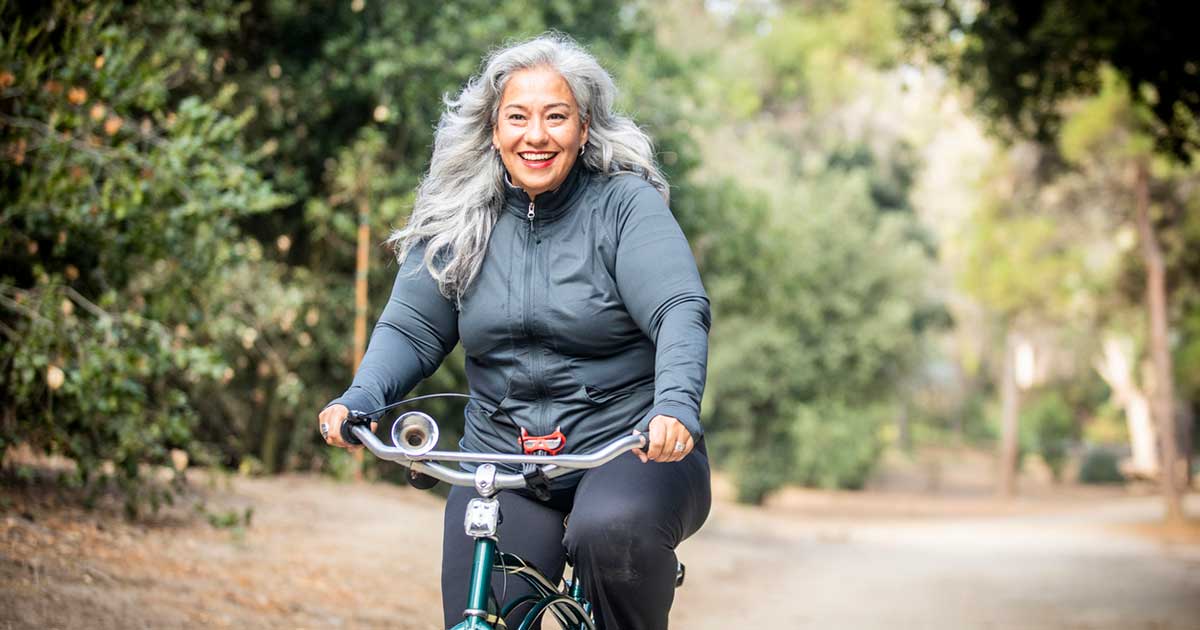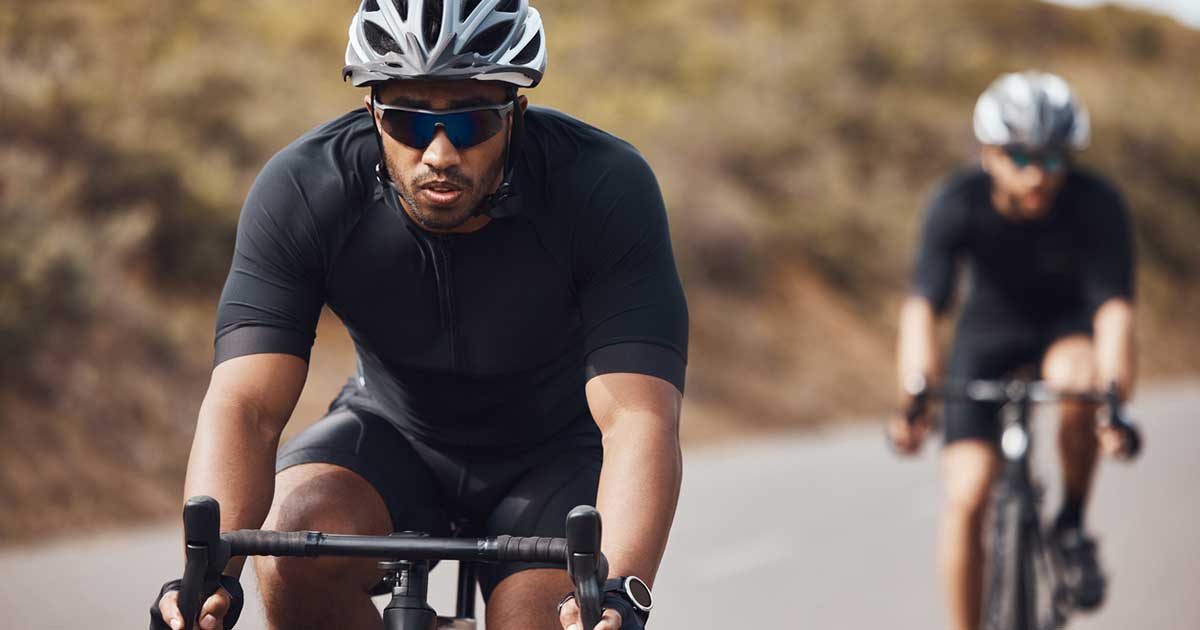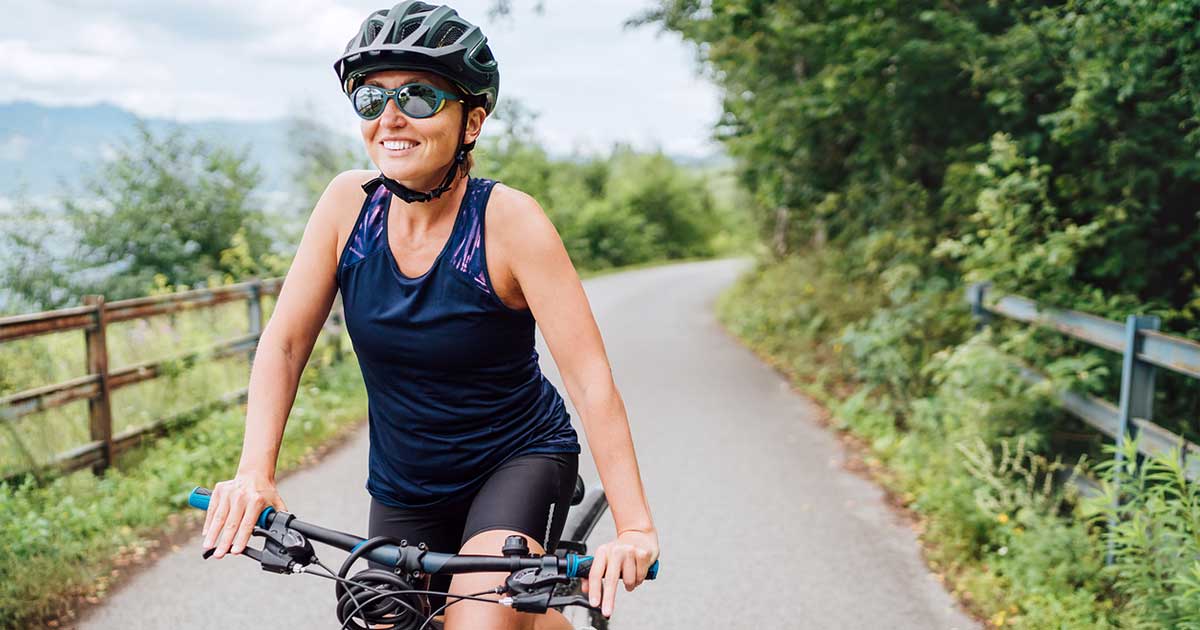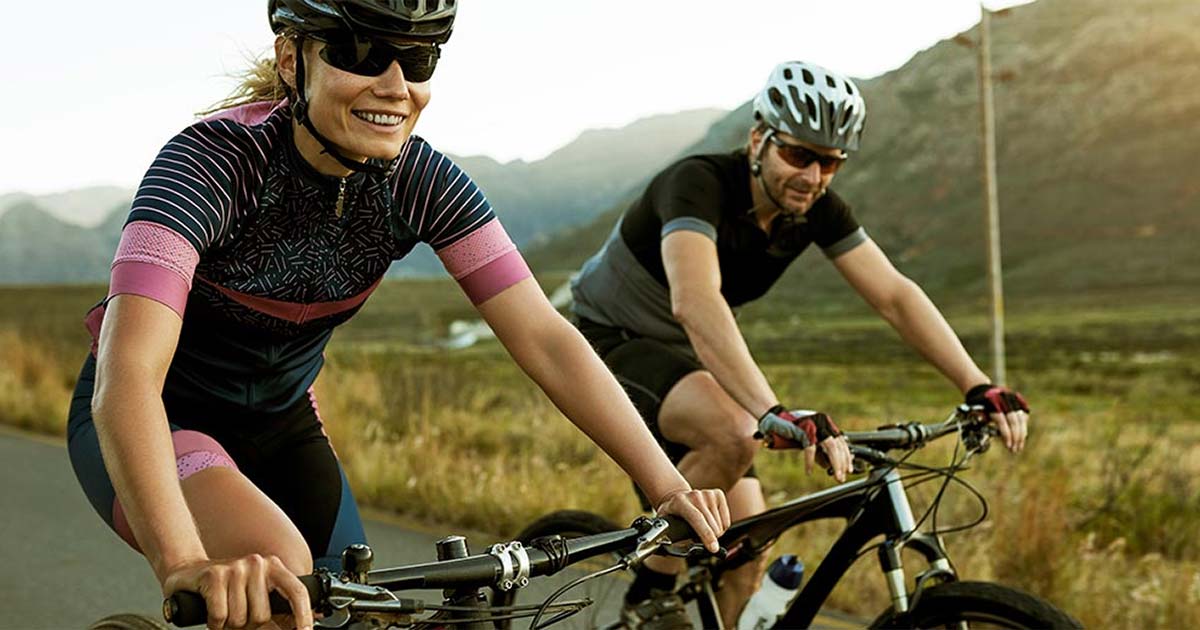
Advice to improve your movement, fitness, and overall health from the #1 in orthopedics in the U.S.
5 Common Cycling Injuries and How to Avoid Them
Cycling issues are generally brough on by overuse and improper form and alignment.
Advice to improve your movement, fitness, and overall health from the #1 in orthopedics in the U.S.

Luckily, there are some straightforward ways to avoid many common cycling injuries that can also help you improve your performance and get a better workout, says Letty Krueger, PT, DPT, SCS, CSCS, a physical therapist at HSS. Below are the issues typically associated with regular cycling and how to combat them.
Achilles Tendinitis
The Achilles tendon, also known as the heel cord, is a tendon on the back of the leg that attaches the calf muscle to the heel. For cyclists, overuse and poor technique can aggravate the Achilles tendon, causing pain and swelling over the back of the foot known as Achilles tendinitis.
This irritation is largely a result of a poor-fitting bike. Things to watch out for that may increase risk of this injury are riding with the seat too low or too high, using improper pedaling technique and poor foot alignment caused by improper pedal/cleat set up, Krueger says. “Generally, the ball of your foot should be directly over the pedal axle,” she adds.
For riders experiencing tendinitis, “stretching, strengthening and rest are advised,” Krueger says. Some good examples of stretches and exercises to do are calf stretches in both a straight and bent knee position, and eccentric heel raises, in which you raise up on both toes, shift weight over to the affected side and slowly lower down on that side.
Plantar Fasciitis
The plantar fascia is a thick band of connective tissue that lies on the bottom of the heel. Plantar fasciitis consists of a sharp heel pain that is caused by repetitive irritation to the plantar fascia. “This irritation can be caused by over-pronation during the downstroke while pedaling,” Krueger says.
A simple way to reduce your risk of developing plantar fasciitis is to raise the height of your bike seat. This lessens the stress placed on the plantar fascia during pedaling. If you’re already experiencing plantar fasciitis, special shoe inserts called orthotics, non-steroidal anti-inflammatory drugs (NSAIDs) like ibuprofen and physical therapy are typically effective.
Numbness and Paresthesias
Numbness and paresthesia, a sensation commonly referred to as a tingling or “pins and needles,” are common complaints amongst cyclists. Most commonly seen on the top of the foot and big toe, these issues are caused by compression of the nerves that provide sensation to the foot.
The solution to this one is simple: Invest in properly fitting shoes, and keep your straps on the looser side, as ill-fitting footwear and over-tightened straps are typically to blame. Switching to clipless pedals and shoes may also help you avoid these symptoms.
Metatarsalgia
Metatarsalgia describes pain that is specific to the ball of the foot that is brought about in cyclists by repeated stress during pedaling. The general culprits are pedaling against too much resistance, poorly positioned cleats and feet and rigid cycling shoes. Soft-soled shoes or a soft insert may help decrease pressure and reduce symptoms.
Low-Back Pain
Improper bike fitting can lead to a number of issues. For example, if your seat is too high, it can cause you to shift from side as you reach for the bottom of the peddle stroke. This increases your spinal rotation and potentially strains the lower back.
Another example is low handlebars. Riding low puts you in a more aerodynamic position, reducing wind resistance and making you more energy efficient. However, this can also put increased strain on the neck as you look ahead, while causing the rest of your back to flex more.
Your posture on the bike puts your hip flexor muscles in a shortened position. The main hip flexor muscles have attachments to the vertebrae of the low back, so this tightness in your hip muscles can cause pulling on the spine. To counteract this, stretch your quads and hip flexors after every ride. It’s also important to maintain the mobility of your hip joints.
Published 9/19/2023


